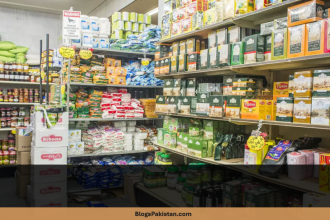A Sudden Stop to a Global Supply Chain
Brazil has long been celebrated as the world’s leading exporter of poultry and meat. In 2024 alone, it shipped over five million tons of poultry to destinations across the globe. Yet, within days of confirming its first Highly Pathogenic Avian Influenza (HPAI) outbreak in the southern state of Rio Grande do Sul, Brazil found itself shut out from its biggest premium market: the European Union.
The European Commission—which mandates that exporting countries prove they are free of HPAI—announced on May 19 that no animal health certificate from Brazil could be issued, effectively barring all Brazilian poultry and meat products from EU ports. For a nation built on agricultural export prowess, this abrupt ban highlights just how fragile global food chains can be when faced with disease outbreaks.
The Timeline: From Farm to Trade Freeze
First Outbreak Detected
- May 16, 2025: Brazilian authorities confirm HPAI at a commercial poultry farm in Rio Grande do Sul.
- Same Day: China, Brazil’s top buyer, imposes a 60-day country-wide ban on poultry imports from Brazil.
EU’s Rapid Response
- May 19, 2025: The European Commission issues a statement: EU import rules require exporter freedom from HPAI. Certificates from Brazil are suspended indefinitely.
- Outcome: All Brazilian poultry and meat shipments, regardless of origin within the country, are halted at EU borders.
Why the EU Ban Matters
Not Just Numbers: Quality and Pricing
Though only about 4.4% of Brazil’s poultry tonnage headed to the EU in 2024, those premium exports carried significant influence. EU buyers prize Brazilian chicken for its competitive pricing and consistent high standards.
Local EU producers have often felt price pressure from these imports, especially on added-value cuts. The sudden ban may provide relief to Europe’s domestic market—but could also lead to consumer sticker shock and tighter supply.
Beyond Poultry: Broader Meat Trade Impacts
Brazil’s export muscle isn’t confined to chicken. The nation is a leading pork and beef supplier as well. While the current EU freeze targets avian products, veterinary authorities worry that crossing transmission vectors could prompt wider meat trade restrictions if HPAI spreads further.
Brazil’s Immediate Challenges
Restoring ‘Disease-Free’ Status
Regaining EU market access requires Brazilian veterinary services to complete:
- Comprehensive surveillance of domestic poultry flocks.
- Wild bird monitoring in outbreak zones.
- Strict biosecurity measures and reporting.
Until the World Organisation for Animal Health (WOAH) re-certifies Brazil, export certificates remain on hold.
Economic Toll
A conservative estimate pegs daily losses in EU-bound revenue at $2–3 million. For a government striving to balance fiscal pressures, any pause in export earnings compounds existing economic challenges.
Ripple Effects Across the Industry
Supply Chain Disruption
EU importers must scramble to find alternate sources. Thailand, Turkey, and Ukraine could see short-term demand spikes. Meanwhile, Brazilian processors face storage backlogs and renegotiated contracts.
Domestic Price Fluctuations
With excess poultry diverting to local markets, Brazilian consumers may enjoy cheap chicken—but such oversupply can destabilize farmgate prices, squeezing smaller producers.
Impact on Farmers
Backyard and industrial-scale poultry farmers confront heightened culling mandates and loss of earnings. Compensation mechanisms are uneven, leaving many in precarious positions.
Looking Abroad: Alternative Markets and Strategies
Pivot to Existing Partners
Brazil’s trade network extends beyond the EU. Key buyers such as China, United Arab Emirates, Japan, Saudi Arabia, and South Africa stand ready to absorb more volume—though at potentially lower margins or under stricter conditions.
Developing New Trade Corridors
Longer-term strategies include expanding into emerging markets in Africa and Southeast Asia, where demand for affordable protein is rising. Brazil could renegotiate tariff concessions or strike bilateral health agreements to diversify its export portfolio.
Mitigating Future Risks
Strengthening Biosecurity
Investing in farm-level biosecurity—fence repairs, controlled access points, and routine disinfection—will be critical to prevent recurrences.
Early Detection and Transparency
A real-time reporting platform for farmers and vets could slash response times. Increased transparency builds trust with trading partners and avoids blanket suspensions.
Insurance and Compensation Frameworks
A robust insurance scheme for poultry farmers, backed by public-private partnerships, would cushion economic shocks from disease outbreaks.
What This Means for Global Consumers
Price Volatility
Shoppers in Europe may face higher chicken prices or switch to alternative proteins as importers adjust supply chains. Conversely, Brazilian consumers might temporarily savor lower retail prices—but may face shortages if production slows down further.
Food Security Concerns
This crisis underscores the need for diversified protein export sources. Governments and industries worldwide might explore local production boosts or alternative proteins such as plant-based meat substitutes.
Preventing Future Outbreaks
Avian influenza is an ever-present threat in a world of migratory birds, dense livestock populations, and intense international trade. Brazil’s sudden exclusion from its most prestigious market serves as a stark reminder:
- Vigilance: Continuous surveillance of animal health.
- Preparedness: Rapid response protocols for culling, disinfection, and compensation.
- Partnerships: Collaborative frameworks with trading partners to ensure both safety and market continuity.
Conclusion: Navigating Through a Ban
Brazil’s poultry sector stands at a crossroads.
In the short term, the nation must satisfy rigorous EU health standards to unlock a key trade lane. Mid-term, it needs strategic diversification of export destinations and value-added product lines. Long-term, robust biosecurity and risk management frameworks will be essential to protect both farmers and consumers.
As global poultry prices ebb and flow, this episode highlights the interconnected nature of modern food systems. An outbreak in one corner of the globe can reverberate through markets, tables, and governments thousands of miles away.










